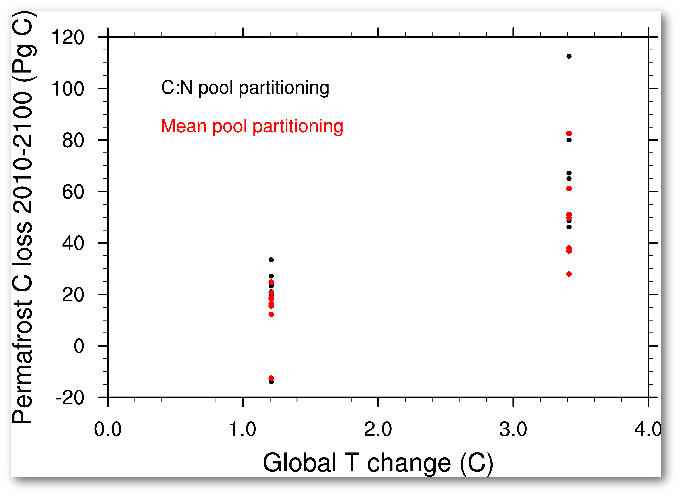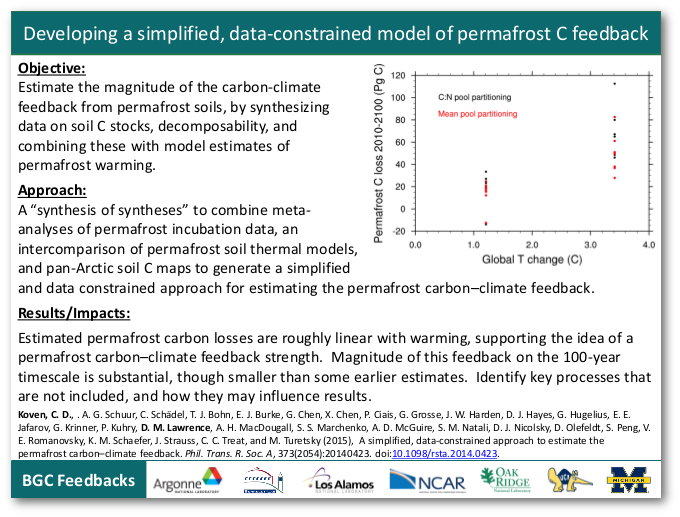Research Highlights
How can we most directly combine datasets to estimate the magnitude of the permafrost carbon–climate feedback?
November 13, 2015
Enormous stocks of carbon exist in permafrost soils, which are vulnerable to loss with warming. Earth system models (ESMs) are beginning to include the processes that govern this feedback, but they show large uncertainties for permafrost processes. Working as part of the Permafrost Carbon Network (PCN), we built a synthesis of syntheses that combines meta-analyses of permafrost incubation data, Panarctic soil C maps, and Intercomparison of soil thermal models for the permafrost region to create the PCN Incubation–Panarctic Thermal (PInc–PanTher) scaling approach. The results of this approach are that carbon losses are roughly linear with warming, with a permafrost carbon–climate feedback parameter of −14 to −19 Pg C °C−1, which is still substantial but smaller than some earlier estimates. We identify key processes that are not included in this approach as a guide for further research directions on understanding the permafrost carbon–climate feedbacks.
Objective
Estimate the magnitude of the carbon–climate feedback from permafrost soils, by synthesizing data on soil C stocks, decomposability, and combining these with model estimates of permafrost warming.
Approach
A “synthesis of syntheses” to combine meta-analyses of permafrost incubation data, an intercomparison of permafrost soil thermal models, and pan-Arctic soil C maps to generate a simplified and data constrained approach for estimating the permafrost carbon–climate feedback.
 |
Total integrated C losses using the PInc–PanTher scaling approach for interval 2010–2100 for two warming scenarios, two different assumptions of initial C pool partitioning and multiple soil temperature models. |
Results/Impacts
Estimated permafrost carbon losses are roughly linear with warming, supporting the idea of a permafrost carbon–climate feedback strength. Magnitude of this feedback on the 100-year timescale is substantial, though smaller than some earlier estimates. Identify key processes that are not included, and how they may influence results.
Koven, C. D., E. A. G. Schuur, C. Schädel, T. J. Bohn, E. J. Burke, G. Chen, X. Chen, P. Ciais, G. Grosse, J. W. Harden, D. J. Hayes, G. Hugelius, E. E. Jafarov, G. Krinner, P. Kuhry, D. M. Lawrence, A. H. MacDougall, S. S. Marchenko, A. D. McGuire, S. M. Natali, D. J. Nicolsky, D. Olefeldt, S. Peng, V. E. Romanovsky, K. M. Schaefer, J. Strauss, C. C. Treat, and M. Turetsky. November 13, 2015. “A Simplified, Data-constrained Approach to Estimate the Permafrost Carbon–Climate Feedback.” Phil. Trans. R. Soc. A, 373(2054):20140423. doi:10.1098/rsta.2014.0423.
